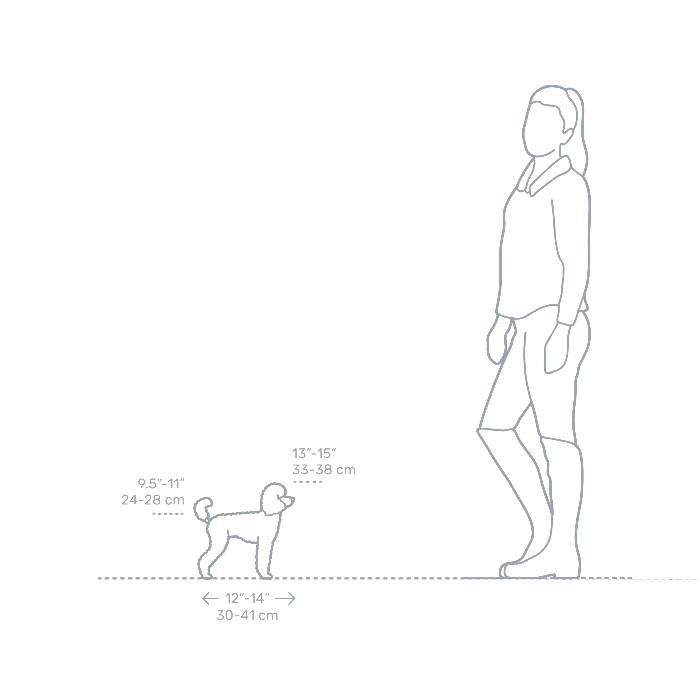Ultimate Guide to Flying with Your Doodle Puppy: Airline Dog Policies Decoded
Are you planning to travel by air with your beloved dog? Understanding the different airline pet policies can be quite overwhelming. Each airline has its guidelines when it comes to carrier measurements and breed restrictions, which can make things a bit complicated. Before you embark on your journey, it's important to have a good understanding of the airline dog policies to avoid any confusion or issues during your trip.
Preparing to Fly With Your Dog: Health Checklist
If you've decided to fly with your pup, ensure you've completed the necessary preparations:
Schedule a vet appointment 7–10 days before departure for a health check-up, vaccinations, and obtaining any required certificates.
Pack all necessary medications and ensure you have enough food for the trip, especially if your dog has dietary restrictions.
Discuss anxiety management strategies with your vet and consider alternatives to sedation, such as calming collars or anti-anxiety apparel.
Take extra precautions if traveling with brachycephalic breeds due to their susceptibility to respiratory issues in certain conditions.
Preparing to Fly With Your Dog: Airline and Travel Requirement Checklist
Before booking your flight, familiarize yourself with your airline's pet travel policies:
Check quarantine, vaccination, and health certificate requirements at your destination and ensure compliance.
Select a well-ventilated, size-appropriate carrier that meets airline specifications.
Notify your airline in advance about traveling with your dog and inquire about any additional regulations or restrictions.
Aim for direct flights whenever possible and consider scheduling flights during cooler times of the day, especially in extreme temperatures.
Choosing the Right Pet Carrier Allowed in Cabin
When selecting a pet carrier for cabin travel, ensure it meets airline requirements:
The carrier should allow your pet to stand, sit, turn around, and lie down comfortably without touching the sides or top.
Hard-sided carriers should not exceed under-seat dimensions, while soft-sided carriers should fit without excessive collapsing.
Consider options like the Sherpa Original Deluxe Airline-Approved Dog & Cat Carrier Bag for a suitable and comfortable travel experience.
Flying With Your Dog: An Airline-by-Airline Guide
Below are summarized guidelines from various airlines regarding pet travel:
Always refer to your airline's specific policies and communicate directly with them before your trip.
Southwest Airlines
Allows dogs to travel below a seat in an approved carrier — up to 18.5 inches long by 8.5 inches high and 13.5 inches wide.
Up to six dogs are allowed on Southwest flights.
United Airlines
No weight or breed restrictions for dogs as long as they are in an approved hard or soft-sided carrier, measuring 17.5 inches long by 9 inches tall and 12 inches wide for a hard carrier, or 18 inches long by 11 inches tall and 11 inches wide for a soft carrier.
Delta Air Lines
Small dogs can travel on Delta Air Lines flights as long as they can fit inside a carrier stored below the seat.
The size of the carrier depends on the aircraft, but in general, the airline recommends a soft-sided carrier no larger than 18 inches long by 11 inches tall and 11 inches wide.
American Airlines
Allows dogs to travel in a carry-on container, which must remain under the seat in front of the pet owner throughout the flight.
Recommends a soft-sided carrier that measures 18 inches long by 11 inches tall and 11 inches wide.
Private or charter flights
Dogs that weigh less than 150 pounds can sit on seats.
BarkAir, a charter operator tailored specifically for those flying with dogs, offers services for dog owners.
Carrier Dimensions:
Length: Between 17.5 to 18.5 inches
Height: Between 8.5 to 11 inches
Width: Between 11 to 13.5 inches
Weight:
There were no specific weight limits mentioned, but the pets should be small enough to fit comfortably in the carrier and under the seat.
These dimensions and weight guidelines may vary slightly depending on the airline's policies and the type of carrier used.
Breeder Approved Airline Carriers
These are the three Carriers we have purchase and use for transport.




